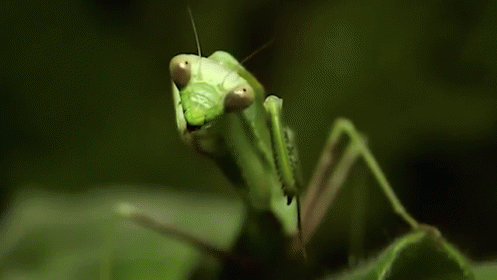The praying mantis (Mantis religiosa) and other insects in the order Mantodea get their name from the Greek mantis, literally “one who divines, a seer, prophet,” which in turn is from mainesthai, “be inspired.”

Many people misinterpret the name as “preying mantis,” partially thanks to the fact that many mantis species are excellent ambush hunters with a voracious appetite. The general word “mantis” arose in English in the 1650s to refer to insects that are primarily part of the Mantidae family.
Praying mantises in particular, but many types of mantids in general, are characterized by the position in which they hold their forelegs, which resembles praying. This pose—combined with their rather mystical appearance and the grace and patience of their movements—inspired the adoption of the Greek mantis, which (in addition to mainesthai) is related to menos “passion, spirit,” from the PIE mnyo-, a suffixed form of root men-, “to think.” The root men- also influences many other words related to thought and memory: mnemonic, amnesty, music, museum, mentor.
I hope you’ve enjoyed a side of entomology with your etymology.
